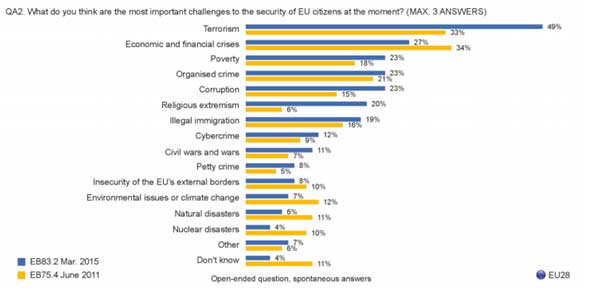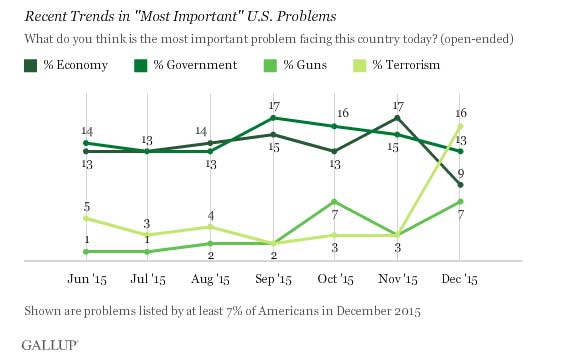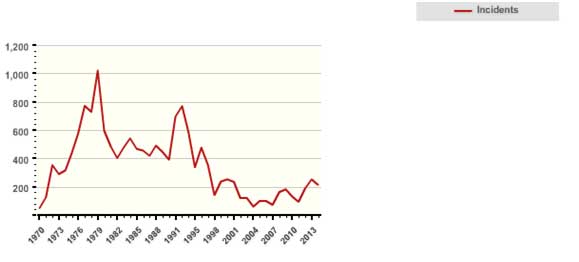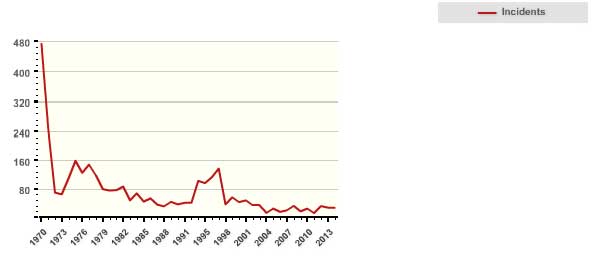Threat Of Terrorism: Should We Be Scared? – Analysis
By Teja Palko*
In the light of one of the most important sport spectacles – European football cup the major concerns expressed by the organizers and countries were contemporary threats of terrorism. In the event of recent terrorist attacks and threats towards the western world the media as well as politics were focused on the preventing measures and safeguarding from potential terrorist attacks. Every casualty caused by the act of terrorism is one casualty too many, but when comparing other threats to the terrorism it is obviously that the most reported threat is not the biggest concern and should not be reported as such.
The number of terrorism causalities as well as number of accidents shows that other threats happen more frequently and also cause more casualties and deaths. The terrorism is unjustified regarded as one of the most pressing issues. The reasons can be found in dramatic mass media reporting and political focus on terrorism rather on the issues that can have on a longer period of time the same effects as terrorist attacks.
Based on the European Commission and Eurobarometer , which measures the public opinion of the citizens, shows that terrorism was perceived as one of the greatest challenges in the European Union security area. The public opinion is showing the increasing terrorism threat perception in the light of Paris and other European terrorist attacks in the recent times. The perception may possible increase in the light of Brussel’s attacks. In the 2015 almost half of the European Union citizens believed terrorism was more concerning as economic and financial crisis, which caused and resulted in vast numbers of unemployed people all over the world. The terrorism was perceived more pressing issue as poverty, organized crime, corruption, religious extremism, illegal immigration, cybercrime, and other environmental related security issues. Further on, around 20% of the citizens perceived religious extremism as one of the most important security challenges, which is also shown in the Figure 1. What is more, around 68% of the European Union citizens believed that the terrorism will likely to increase.

Source: European Commission
The situation across the Atlantic and the American public opinion about terrorism is shown below in Figure 2. The recent trend of public opinion measured by Gallup shows that the perceived terrorist threat has increased in the United States in the light of Paris as well as San Bernardino attacks, which perception will even increase in the recent shooting regarded as a potential internal terrorist attack. 16% of Americans believed that the terrorism is the most important United States problem and was perceived more important than the national economy, government or issue of guns.

Source: Gallup.
No opportunity, no job or underpaid jobs, hunger, poverty, obesity and other diseases which could be prevented and further on climate change consequences, pollution, food and water scarcity correlated with the unsustainable patterns of living and consumption are far greater threats to the humanity than terrorism.
Terrorism is not a new phenomenon, nor in Europe nor in the world. It needs to be pointed out that in spite of the public perception terrorism and even more the religious or Islam terrorism which is the most feared and written about is not the most frequent driven terrorist act which appears in the western part of the world. Based on the Global Terrorism Index from 2015 the majority of the terrorist attacks were driven by right wing extremism, anti-government sentiment, nationalism and political extremism and not by the Islamic fundamentalism.

Source: Global Terrorism Database
Based on the Global Terrorism Database the number of injuries and number of fatalities caused by terrorist attacks were in the Western part of the world, in Europe as well as in the United States, far greater in the past as in the recent years. The mass media seems to be reporting about the number of the terrorist incidents on the global scale, which did increase in comparisons to the past. The number of attacks in Western Europe is shown from the Figure 3 below, but does not include the recent terrorist attacks in the last three years. The number of terrorist incidents is on the decline in the North America as well as in Europe.

Source: Global Terrorism Database
The terrorist activity did increase worldwide as well as the casualties, but terrorism is highly concentrated in five countries and hence in Iraq, Nigeria, Afghanistan, Pakistan and Syria where 78% of all deaths occurred. The majority of the global countries – 60% did not report of a single death caused by the terrorist activity, but the majority of them did experience some kind of terrorist incidents. The fact is that 13 times more people are killed by homicides as by terrorist activity, but the homicide is not one of the most reported topics in mass media, even though it occurs more frequently and causes more deaths on the global scale. The majority of deaths caused by terrorism does not occur in the West, where the sole perpetrators are the main actors in terrorist incidents.
The terrorism is not an existential threat, but the politicians, media and international organizations are focused on the topic. Evaluation of security and the media constant reporting impacts the public perception about the terrorism. The media has definitely an exponential effect on the perceived threat and my personal opinion is that dramatic titles and sole partly reporting about the increased number of causalities and increased prevented cases should be incorporated into the broader picture in order to get the people well informed about the threat which impacts the politics, policies and restricts various human rights with imposing laws. After the 9/11 and in recent European terrorist attacks the topic has been on the major news media in the Western part of the world with getting a lot more attention as other prevailing security threats. With closer look one needs to ask themselves does the current terrorism in West really represents a pressing threat to our way of life, social, democratic and cultural values and can justify the wiretapping, state sponsor surveillance, or even suspension of human rights in any form or it is just a political tactic to achieve desired goals?
About the author:
*Teja Palko is a Slovenian writer. She finished studies on Master’s Degree programme in Defense Science at the Faculty of Social Science at University in Ljubljana.
Source:
This article was published by Modern Diplomacy.

